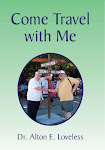
After attending a Mozart symphony the night before and the Schönbrunn palace early the next day, which is a former imperial summer residence of successive Habsburg monarchs in Vienna. It has been one of the major tourist attractions in Vienna. The palace and gardens illustrate the tastes, interests, and aspirations of the Habsburgs.
To my surprise I learned there are 52 palaces in this city alone. After a morning at the Schonbrunn visiting the inside of the palace and garden we departed to tour the city. By the mid-afternoon we made our advent into the grounds of the beautiful Belvedere Palace, which seemed so large from our prospective.
The Belvedere is a baroque palace complex built by Prince Eugene of Savoy in Vienna, south-east of the city center. After buying the plot of land in 1697, Prince Eugene had a large park created. The Belvedere palace began as a suburban entertainment villa in 1714. Actually the work began to erect what is now called the Lower Belvedere, not as a palace but as a garden villa, with a paintings gallery, with suitable living quarters. The architect was Johann Lukas von Hildebrandt, one of the most important architects of the Austrian Baroque, who produced in the complex of buildings his masterwork. He was assisted by the Venetian sculptor Giovanni Stanetti, who had been brought to Vienna by Prince Eugene, with his many assistants providing properly Italianate sculptural details, such as the figures along the balustrade and garden sculptures. The Lower Belvedere was finished in 1716.
It houses the Österreichische Gallery Belvedere museum.
Vienna is well known for Wiener Schnitzel, a cutlet of veal that is pounded flat, coated in flour, egg and breadcrumbs, and fried in clarified butter. It is available in almost every restaurant that serves Viennese cuisine. It was here that I acquired a taste for Viennese and German cuisine which include Tafelspitz (very lean boiled beef), traditionally served with Geröstete Erdäpfel (boiled potatoes mashed with a fork and subsequently fried) and horseradish sauce, Apfelkren (a mixture of horseradish, cream and apple) and Schnittlauchsauce (a chives sauce made with mayonnaise and old bread).
Vienna has a long tradition of producing the finest cakes and desserts. Apfelstrudel (hot apple strudel), Palatschinken (sweet pancakes), and Knödel (dumplings) often filled with fruit such as apricots are among some of my favorites.
However, Sausages are some of my favorites and are available even from street vendors though out the day and into the night. Follow is a little comparison between there and here. The sausage known as Wiener (German for Viennese) in the USA and Germany is called Frankfurter. Other popular sausages are a coarse beef and pork sausage, generally boiled called Burenwurst and Käsekrainer (spicy pork with small chunks of cheese), and Bratwurst (a white pork sausage). Mustard is the traditional condiment and usually offered in two varieties: sweet or spicy.
After leaving Vienna we continued our visit in Austria a beautiful country.





No comments:
Post a Comment